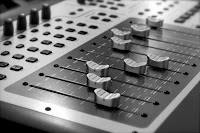"For the most part, a mix where the faders remain more or less static can be boring and unexciting. Even before automation, mixers were constantly riding instrument and vocal faders during a mix in order to make sure they stood out in certain places or added an extra intensity to the mix. The best part about automation is that those moves can be exactly replicated on every playback.
Among the ways to add dynamics to a mix are:
- Slightly boost the rhythm section during fills, turnarounds and even choruses (usually only a couple of dB is all that’s necessary, but it depends upon the track).
- Boost the snare and toms during fills.
- Boost the kick, snare or cymbals on accents or the downbeat of a new section.
- Duck the rhythm instruments during an instrument solo to help clear out space in the mix.
- Boost the high-hat in parts where it’s being struck and decrease it where it’s not.
- Add additional reverb or delay to an instrument when it gets masked as other instruments are added to the mix.
- Pump a strumming rhythm guitar in time with the music, pushing it especially on 2 and 4, or push it on the upbeats (one AND two AND three AND…)
- Gently boost the fills or other instruments in between vocal phrases.
- Pull back the downbeat of a chorus if the drummer hits it too hard.
- Pump the “4 AND” on a percussion track.
TIP: The key to understanding how to use automation to add dynamics is by observing a performance by a great band. This will help you to be able to hear all the nuances that the dynamics of the mix needs in order for it to be exciting. "
To read additional excerpts from this book and others, go to bobbyowsinski.com.
----------------------------------
You should follow me on Twitter for daily news and updates on production and the music business.
Don't forget to check out my Music 3.0 blog for tips and tricks on navigating social media and the new music business.



No comments:
Post a Comment